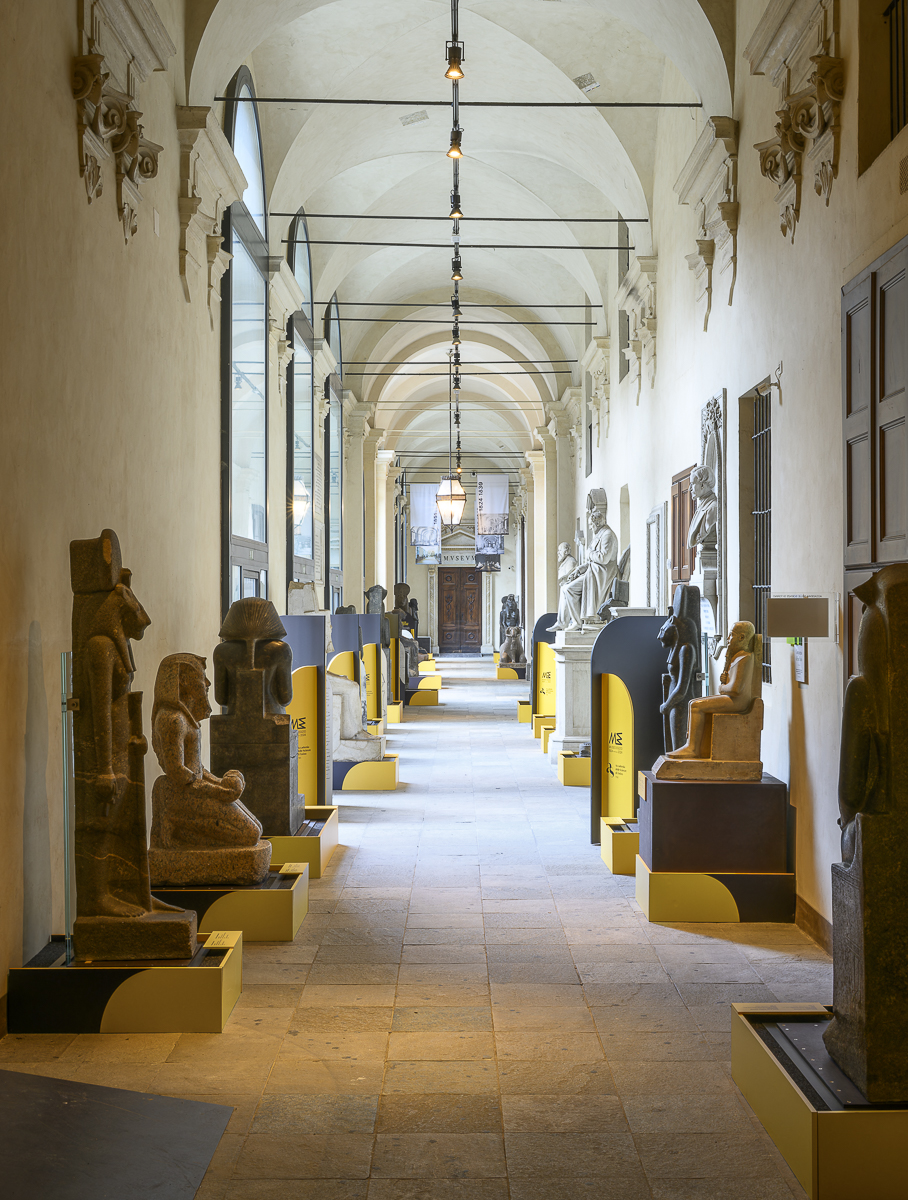Towards the new Gallery of Kings
Museo Egizio and Accademia delle Scienze
From April 23, 2024, gods and pharaohs welcome visitors at the entrance of the Museo Egizio and Accademia delle Scienze.
The statues of the Gallery of Kings are the protagonists of a temporary exhibition - the result of collaboration between thethe two institutions - which offers an evocation of the origin of the Museum, 200 years ago, when the sculptures of pharaohs and deities arrived in Turin.
The exhibition will be open until November 4, 2024.

In 1823 the statues crossed the threshold of the baroque palace that now houses the Museo Egizio and Accademia delle Scienze, along with thousands of artifacts from the Drovetti collection, and were placed on the ground floor and in the courtyard. A year later, the world's first Museum dedicated to Egyptian culture was born in Turin.
The setting recalls the position of the statues in the courtyards of the great temples of ancient Egypt, where the deities and pharaohs maintained a close connection with the faithful while manifesting their hieraticism and authority.
It is a unique opportunity to observe details of the artifacts that were previously inaccessible, such as the hieroglyphic inscriptions on the upper part of the throne of the statue of Thutmose I or the back of the headdress of the sovereign Horemheb, or even his nose, which from afar gives the false impression of being upturned due to a 19th-century restoration.

The exhibition is also an opportunity to review the evolution of the arrangements of the statues in the museum over two centuries of history and to draw attention to the 19th-century documents of one of the world's most important Egyptological collections, kept and visible at the Museum and the Academy of Sciences.
Along the exhibition route, the highlights of the display of the monumental artifacts of the collection are recalled. At the Accademia delle Scienze, there are also some letters from the father of Egyptology, Jean François Champollion, the travel notebooks of Carlo Vidua, and other documents that have allowed the reconstruction of the interweaving of events and historical and academic figures that contributed to the birth of the Museo Egizio.
The statues of the Gallery of Kings are the protagonists of a temporary exhibition - the result of collaboration between thethe two institutions - which offers an evocation of the origin of the Museum, 200 years ago, when the sculptures of pharaohs and deities arrived in Turin.
The exhibition will be open until November 4, 2024.

In 1823 the statues crossed the threshold of the baroque palace that now houses the Museo Egizio and Accademia delle Scienze, along with thousands of artifacts from the Drovetti collection, and were placed on the ground floor and in the courtyard. A year later, the world's first Museum dedicated to Egyptian culture was born in Turin.
The setting recalls the position of the statues in the courtyards of the great temples of ancient Egypt, where the deities and pharaohs maintained a close connection with the faithful while manifesting their hieraticism and authority.
It is a unique opportunity to observe details of the artifacts that were previously inaccessible, such as the hieroglyphic inscriptions on the upper part of the throne of the statue of Thutmose I or the back of the headdress of the sovereign Horemheb, or even his nose, which from afar gives the false impression of being upturned due to a 19th-century restoration.

The exhibition is also an opportunity to review the evolution of the arrangements of the statues in the museum over two centuries of history and to draw attention to the 19th-century documents of one of the world's most important Egyptological collections, kept and visible at the Museum and the Academy of Sciences.
Along the exhibition route, the highlights of the display of the monumental artifacts of the collection are recalled. At the Accademia delle Scienze, there are also some letters from the father of Egyptology, Jean François Champollion, the travel notebooks of Carlo Vidua, and other documents that have allowed the reconstruction of the interweaving of events and historical and academic figures that contributed to the birth of the Museo Egizio.